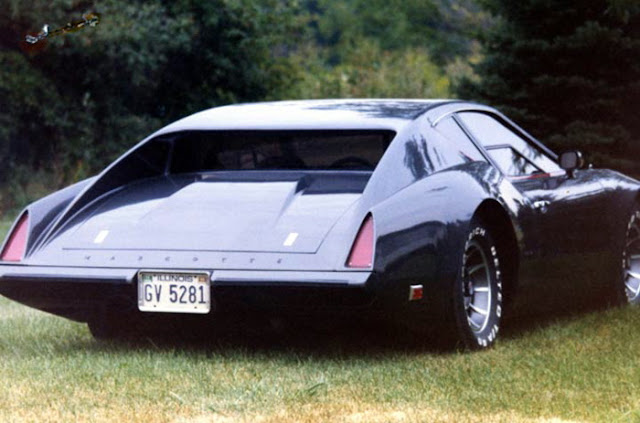New Zealand's Desert Falcon
 |
| Saker SV1, with Lexus V8 power |
The year was 1988. In the little Manawatu town of Feilding, New Zealand, a legendary local racecar driver and builder named Bruce Turnbull began a project that would become the Saker. Deriving its moniker from a Falcon native to the Middle East, the Saker was to be a supercar for the road that would also be at home on a racetrack. An affordable and entertaining weapon for both road and track.
It featured lightweight, GRP and tubular steel construction, low-drag bodywork, gullwing doors, and was designed to take a variety of engines using a Renault 25 transaxle. Ten cars were initially built in series, referred to as "SV1" models, but the majority of those that followed were engineered around Subaru WRX running gear. These were constructed in the 1990's and sold in both component and turnkey form as the "SVS".
Eventually, 8-cylinder motors from Lexus found their way into Sakers, finally giving them the performance their looks implied. Two versions were ultimately offered by Turnbull, the "SVS GT" and "SVS Sprint" roadster. A small number, as few as three, race only Saker GTs were also manufactured under license in the USA. One road going Saker SVS was imported from New Zealand into the US in 2004. It was fitted with a Lexus 1UZ-FE 4.0-liter V8 engine mated to a Renault UN1 5-speed Transaxle. Since then, it has been modified to accept a highly tuned Chevy LS6 5.7L V8, that produces almost 500bhp, mated to an Audi 01E (DQS variant) 6-speed transaxle.
The Saker turned out to be a winning formula on the track, cleaning up against Ferraris and Lamborghinis in its early competitive outings. It set a fastest lap record at Pukekohe and competed in the Wellington Street Race in 1993. As such, a few motor-racing enthusiasts bought the basic $40,000 chassis and a body which required assembly and business hummed along nicely. Orders trickled in from the United States and Australia until 2000, when Saker attracted the interest of Dutchman Robert Visser.
Visser came with the backing of the Dutch National Racing Team. He saw the Saker as a means to fill a gap in the European market, where there was no natural steppingstone to the expensive Le Mans-style endurance events. A typical Le Mans car would cost upwards of $1 million - whereas the Saker could be delivered for as little as $70,000.
An agreement was made between Turnbull and Visser, who thus became the owner of Saker's European trademark. He paid Turnbull €2000 for every car sold - a modest sum but one Turnbull was happy to accept with sales projections of over 100 a year. Turnbull thought he had a watertight agreement with Visser, the cars were to be manufactured in China and exported to the Netherlands, and then right across Europe. Turnbull was paid for 35 cars over the first few years.
The Saker Sportscar Challenge was founded in 2004, allowing Saker drivers to compete against each other under the banner of the Dutch National Racing Team. The Saker Sportscar Challenge was one of the top amateur racing classes in the Netherlands. The series races were held at Circuit Park Zandvoort, TT Circuit Assen, Spa-Francorchamps and Brands Hatch. The final race of the season took place in late October at Circuit Park Zandvoort. Judging by the series' website, the last full season of the Saker Challenge was 2013. Along with the Saker Sportscar Challenge, Sakers also competed for several years in the 24 Hours of Dubai and achieved a class victory in the 24 Hours of Barcelona.
Unfortunately, the Dutch venture ran into financial difficulty and the company was sold to brothers Laurens and Gerrit Meyer - whose business interests include real estate and bars. The new owners realized that the copyright arrangement didn't provide for the possibility of Visser's untimely demise.
This led to a dispute over the Saker intellectual property and manufacturing rights that persists to this day. The result has the car being built by Saker Sportscars, now based in Germany, in a handful of versions. However, a small amount of the cars are still made by Turnbull Engineering in New Zealand, along with spare parts and services for owners of existing cars.
Sources:
A new documentary film on Bruce Turnbull is in the works by Claritive Media (NZ), more info can be found on Facebook.


















Comments
Post a Comment